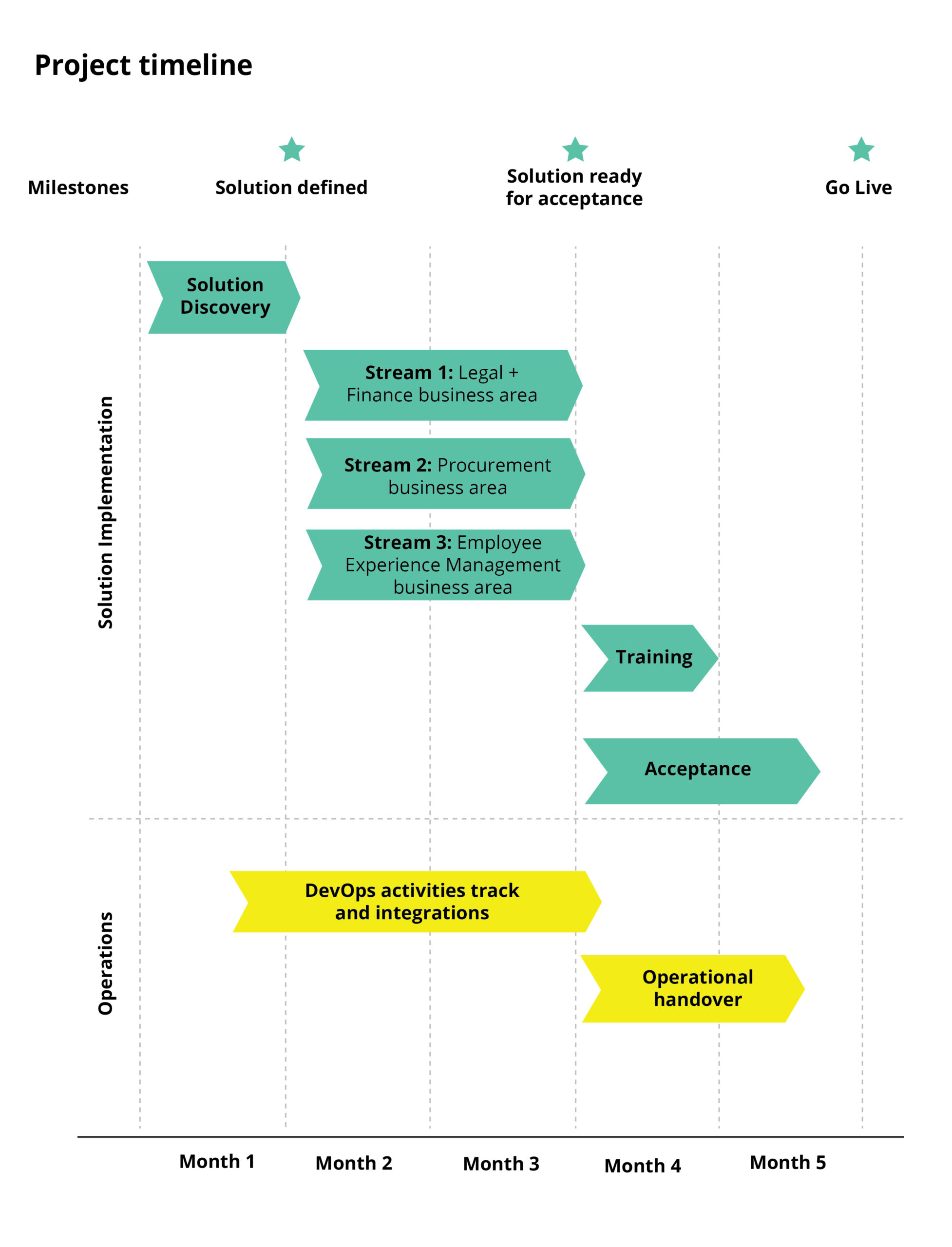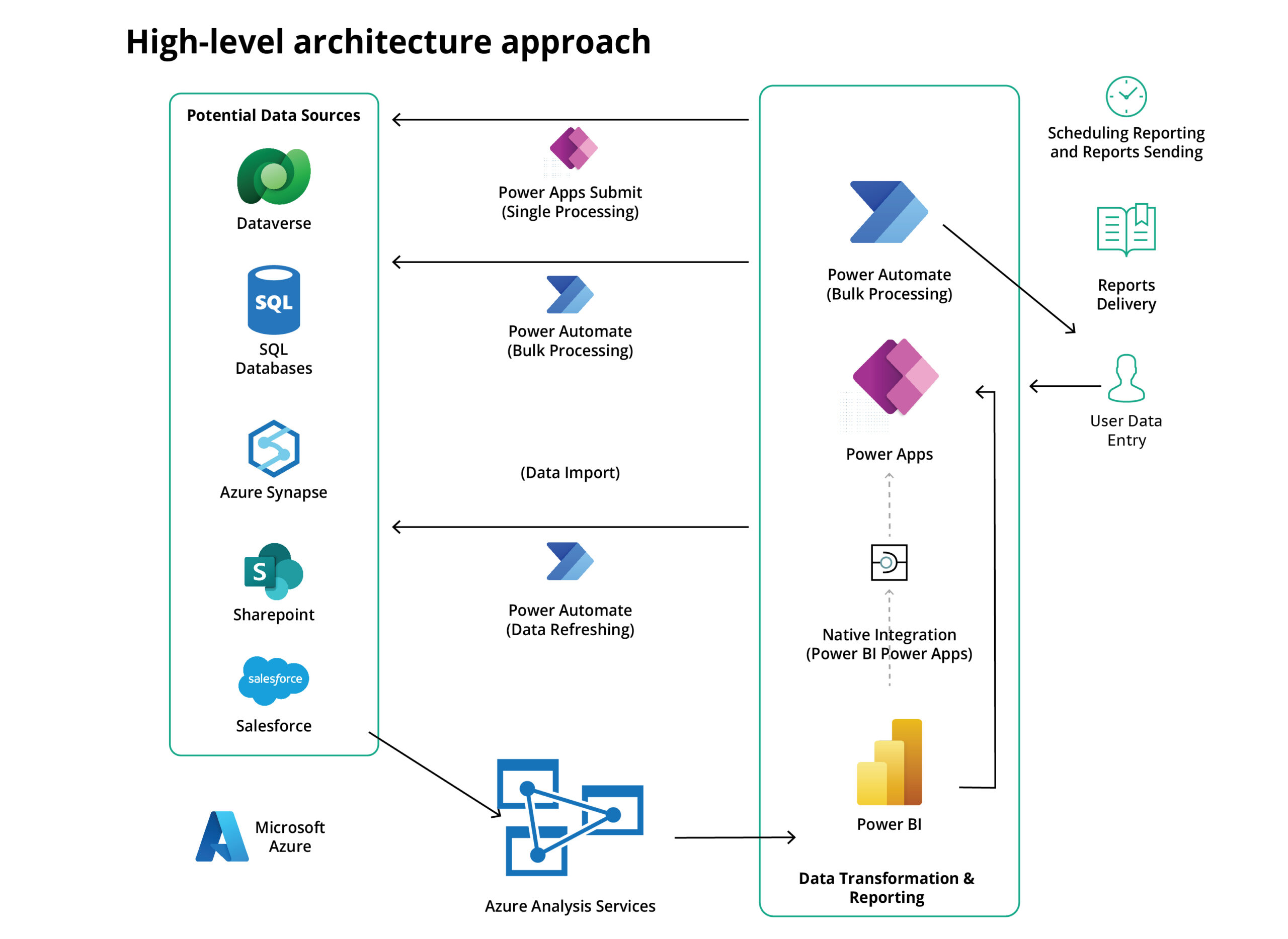Project highlights
- Multi-domain process optimization: Transforming over 20 business processes spanning legal, government relations, accounting, performance reporting, logistics, and employee experience management
- Strategic implementation of robotic process automation (RPA) to optimize workflows, reduce manual errors, and enhance overall operational efficiency
- Period of cooperation:
- 5 months
- Team size:
- 5 members
- Expertise:
- Telecom & Media, Platform Development, Data & Analytics, Intelligent Automation, AI&ML
Business challenge
A leading B2B connectivity provider faced a significant challenge across multiple business domains including legal, government relations, accounting, performance reporting, logistics, and employee experience management. Manual processes dominated various areas, from generating bulk letters for debt reports to responding to customer complaints and managing procurement details.
Similarly, local government-related tasks frequently required custom processes and significant manual effort.
Lastly, tasks related to employee experience management, including recruitment, CV screening, and interview scheduling, required significant time and effort, hindering efficient talent acquisition and management. Our client needed help automating various business processes across domains to improve efficiency, reduce manual errors, and enhance overall operational effectiveness.
Technology solution
In the journey from discovery to implementation, we focused on understanding and optimizing business processes to drive efficiency and productivity. During the initial discovery phase, we meticulously analyzed business requirements and mapped out existing processes, setting up collaborative spaces and conducting workshops to ensure alignment with organizational goals.
Following this, we seamlessly transitioned to the implementation stage, translating the defined solution scope into a tangible system, configuring infrastructure, and conducting extensive testing to guarantee quality and reliability.

Discovery Phase
During the initial discovery phase, we focused on understanding business requirements and mapping out existing processes to identify areas for improvement. We did this by:
- Setting up a collaborative project space to facilitate communication and collaboration among team members
- Conducting business process workshops to analyze business needs and map out existing processes
- Thoroughly examining functional and non-functional requirements to ensure the solution addresses all business needs
- Finalizing the solution scope and defining the technical approach, including integrations with existing systems
- Creating a product backlog and implementation roadmap to guide the development process
Implementation
Following the discovery phase, we moved to the implementation stage, where we translated the defined solution scope into a real-world system by:
- Configuring development infrastructure to support the implementation process
- Implementing the solution scope using selected technologies
- Conducting extensive testing and stabilization to ensure the solution meets quality standards and operates smoothly
- Developing a launch plan and training agenda to prepare users for the new system
- Conducting an initial test involving all stakeholders to gather feedback and make any needed refinements before full deployment
Tech Stack
Building upon insights gained during the discovery phase, we employed a robust tech stack to address the identified business needs. This comprehensive suite of tools allowed us to harness the power of AI and advanced search capabilities. Let’s explore how we leveraged each component of our technology solution to transform and modernize the client’s business processes:
- Excel/Power Apps to build user-friendly interfaces and automate various business processes
- Power Automate to automate the workflow and integrate different systems and services
- Power BI for data visualization and analysis, providing insights into business performance and trends
- Power Apps AI Builder to enhance the capabilities of Power Apps with AI features, enabling intelligent automation and decision-making
- Azure Cognitive Search to facilitate advanced search capabilities, enabling efficient data retrieval and analysis

As a result, our team developed a comprehensive solution that streamlined the workflow, enhanced efficiency, and provided valuable insights for informed decision-making.
Business impact
By leveraging our expertise in robotic process automation and Microsoft Power Apps, our client witnessed significant improvements in efficiency, productivity, and cost-effectiveness across various business domains.
One of the primary impacts of workflow automation was a dramatic improvement in efficiency and productivity. By automating repetitive and manual tasks across multiple departments, the communication service provider (CSP) was able to streamline operations and reallocate resources to more strategic initiatives.
- Fewer errors and reduced operating costs
Implementing RPA also led to a significant reduction in errors and operating costs. Manual data entry and verification processes were prone to human error, leading to inefficiencies and potential financial losses.
Our client enhanced customer satisfaction by automating critical processes related to customer response management. As a result of automation, issues were resolved more efficiently and response times were reduced, increasing customer satisfaction.
- Empowered employees
Implementing low-code RPA empowered employees to focus on more strategic aspects of their roles by freeing them from repetitive tasks.
- Strategic decision-making
RPA-powered data collection and reporting enabled the client to make more informed and data-driven decisions. With visualizations of key performance metrics and trends, stakeholders can better understand business operations and identify areas to optimize and improve.
Workflow automation has transformed our client’s overall operations, driving efficiency, reducing costs, improving customer satisfaction, empowering employees, and enabling data-driven decision-making. As a result, our client is better positioned in a highly competitive industry.
